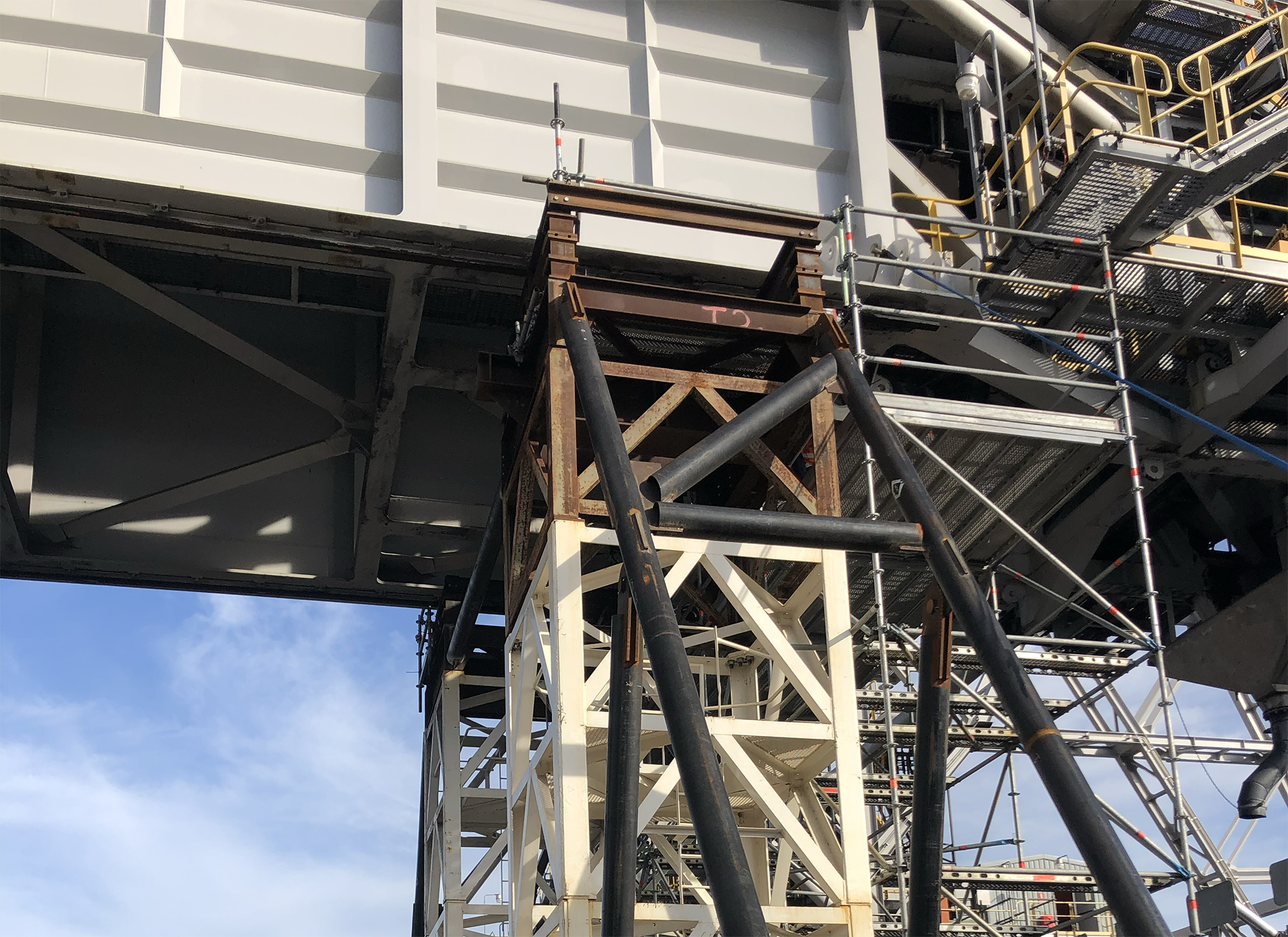Maintenance work on large mobile material handling machines, such as stackers, reclaimers, and shiploaders, often requires the use of temporary structures. These structures, which can include hydraulic jacks, scaffolding, and other support systems, are critical for facilitating maintenance but pose unique challenges when it comes to ensuring their stability under varying wind conditions.
Given the temporary nature of these structures, traditional methods of calculating wind loads—designed for permanent installations—may not always be suitable. In this blog, ASPEC explores an innovative approach to wind load analysis specifically tailored for temporary structures.
When conducting a wind load analysis on a stacker, reclaimer or similar structure, the ultimate limit state wind speed is selected based on the design lifetime of the machine and its importance level. Sometimes, maintenance work is conducted on those machines that involves the use of temporary jacks, props or scaffolding which will need to be assessed under an ultimate limit state wind speed. The ultimate wind speed for the maintenance work could be calculated from the machine’s design wind speed, however doing so will result in speeds that are unlikely to be experienced during temporary maintenance work. An alternative method for wind speed calculation is required that considers the short duration of the work and the improving accuracy of modern weather predictions.
Download the full paper below to learn more about this wind speed calculation method and how to apply it to your projects. This paper will guide you through the methodology and its practical applications, offering valuable insights for engineers and maintenance teams alike.

Paul Munzenberger is a Mechanical Engineer at Aspec Engineering with over 13 years’ technical experience in the mining and materials handling industries. Paul is the Chairman of the RU002 Conveyor and Elevator Belting Australian Standard committee and holds a PHD.
